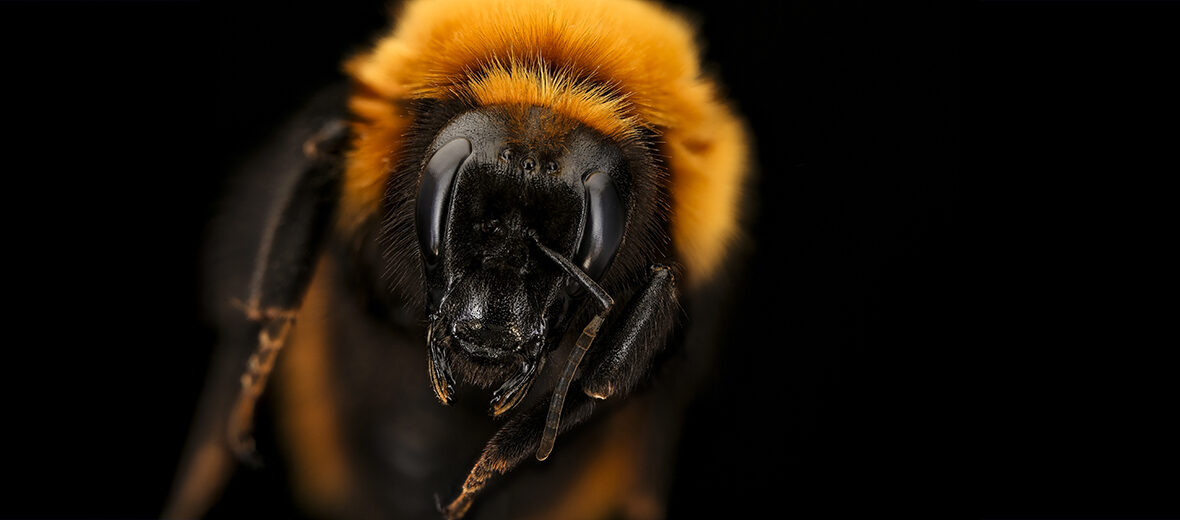
The moscardón is 1 of the largest bee species in the world, with the Wallace’s giant bee being #1. They are endemic to the temperate forests of southern South America. Sadly, these bees face the threats of habitat loss and destruction at the hands of residential and commercial developments, farming, ranching, wood pulp plantations, fires, and fire suppression; intrusion from recreational activities; and invasive species, in the form of European bumblebee species that introduce pathogens and outcompete the moscardóns for food. The IUCN lists these bees as Endangered, and their population trend is listed as decreasing.
First the Stats…
Scientific name: Bombus dahlbomii
Weight: Up to .05 ounce
Length: Up to 1.57 inches
Lifespan: Up to 1 year
Now on to the Facts!
1.) Unfortunately, moscardóns are quite vulnerable to the parasitic protozoan Apicystis bombi, which was co-introduced from the introduction of the buff-tailed bumblebee, which was brought in as a mass pollinator.
2.) These bees were first described in 1835 by the French entomologist Félix Édouard Guérin-Méneville.
3.) The long bristles that cover almost the entire thorax and abdomen give this bumblebee a rather furry appearance.
4.) Queens typically begin colonies in the spring by first locating underground cavities, like rodent burrows.
5.) The queen kicks things off with the production of the egg cell structure inside the underground cavity. The egg cell structure is built from a mixture of pollen and wax that the queen collects from the surrounding environment and brings to the nest site.
But wait, there’s more on the moscardón!
6.) In time, the queen lays her first brood of eggs in the egg cell structure. After a couple of months, in early summer to late spring, this initial brood produces the first workers that take over foraging responsibilities from the queen.
7.) The beginning period in which the queen is alone without any workers is referred to as the subsocial phase. The social phase begins when the initial eggs mature into workers that can begin basic foraging activities.
Did you know…?
Due to their large size and furry appearance, this species has been colloquially described as “flying mice”, and “a monstrous fluffy ginger beast” by British ecologist David Goulson.
8.) Field studies indicate that nests can host populations of up to 100 workers.
9.) Once the workers are mature the queen takes on her main role of laying and incubating the brood eggs to further expand the colony and produce new workers.
10.) Scientific research has indicated that most bees can’t see the color red, as their photoreceptors are more sensitive to short (UV, blue, green) rather than longer wavelengths of light. As a result, bees typically avoid red colored flowers, which are usually pollinated by birds.
But wait, there’s still more on the moscardón!
11.) That being said, these bees still frequently visit certain species of red flowers, like Crinodendron hookerianum, Lapageria rosea, Asteranthera ovata and Embothrium coccineum, that are common in South American temperate forests.
12.) 2 species of bees were introduced 30 years ago in order to increase the seed and fruit yields of cultivated crops in orchards and farms. These bees since have outcompeted the native moscardóns for food and subsequently introduced pathogens that further decimate their populations.
Did you know…?
Researchers are very concerned that further imports of European bee species to South American countries could lead to the complete destruction of native species within the next couple of years!
13.) These bees have only been around for approximately 7.5 million years, during the Miocene epoch.
14.) Research has indicated that individuals in these fragmented environments have longer wings relative to body size than those individuals that reside in continuous forest environments due to the fact that they have a greater need for long distance flights.
15.) Even though these bees have been shown to be more efficient pollinators than the invasive bees, they tend to visit plants less frequently than their invasive counterparts.
Now a Short Moscardón Video!
This video talks about how honey bees, in general, are assigned their roles.
Be sure to share & comment below! Also, check out the Critter Science YouTube channel. Videos added regularly!

Want to suggest a critter for me to write about? Let me know here.
Some source material acquired from: Wikipedia & IUCN



